#chinese mountain
Text
#video#paradise#view#nature#paraiso#natureza#explore#travel#trip#vacation#ai generated#house goals#houses on the mountains#raining#rainymood#rainyday#room#home#books#bookshelf#book and libraries#love#cozy#relaxing#architecture#asian#japan#korean#chinese
361 notes
·
View notes
Photo

Wu Guanzhong (Chinese, 1919-2010), By the Side of the Li River (I), 1977. Oil on board, 59.5 x 41.5 cm.
2K notes
·
View notes
Text

River and Mountain Landscape, Xiang Shengmo (1597-1658)
#art#art history#Asian art#China#Chinese art#East Asia#East Asian art#Imperial China#Ming Dynasty#Xiang Shengmo#landscape#landscape painting#landscape art#rivers-and-mountains#hanging scroll#ink on paper#17th century art#Art Institute of Chicago
256 notes
·
View notes
Text
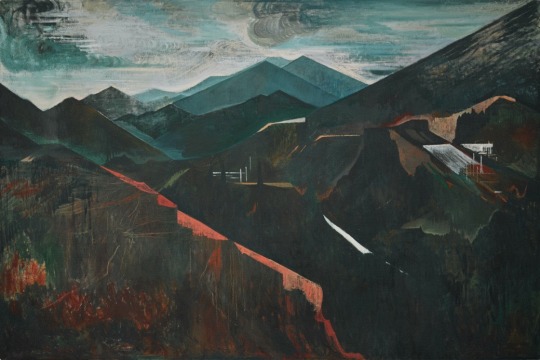
Breaking Through the Mountainscape Xiao Jiang , 2023
Chinese , b. 1977 -
Oil on burlap , 200 x 300 cm.
109 notes
·
View notes
Text
Xiangliu

Image © deviantArt user YunaXD, accessed at her gallery here
[Sponsored by @coldbloodassassin. The xiangliu appears in Guideways through Mountains and Seas as an individual, Xiangliu, who is the minister of the malevolent water god Gonggong. I did consider making it a native or even extraplanar outsider because of that, but ended up going with aberration to stress its connection to nagas. Not that nagas are very aberrant as far as aberrations go...]
Xiangliu
CR 14 NE Aberration
This creature is an oversized serpent with nine heads and slime coating its scales. Its heads are disturbingly humanoid, but still bear fangs and forked tongues.
Xianglius are sadistic water serpents that delight in spreading disease and stagnant water. They are native to swampy lands, and fight violently against any attempt to drain such swamps or make them suitable for cultivation. Nearby fields are likely to be subject to their attacks, including flooded crops, summoned clouds of malarial mosquitoes and fouling wells and springs. Xianglius sometimes find allegiances with evil druids, daemons of pestilence and famine, or even gods of water who are hostile to civilization.
A xiangliu rarely hesitates to fight. Their bites are not fully venomous, but carry a foul slime that renders creatures bitten weak and queasy. They can spit jets of water with lethal force, and often split their attacks, biting creatures up close while barraging enemies that are more distant. Fighting a xiangliu is often quite frustrating, as the monsters create moats of mud and water to slow anyone approaching on foot, and can manipulate water to isolate and capsize boats. Wise adventurers approach a xiangliu’s lair from the air.
Despite their nine heads, a xiangliu has only one personality; peevish, cruel and sadistic. They are notorious gluttons; one legend is that they have nine heads in order to eat nine different meals at the same time. A xiangliu grows to about twenty feet long. Their lifespans are measured in centuries.
Xiangliu CR 14
XP 38,400
NE Large aberration (aquatic)
Init +6; Senses all around vision,darkvision 60 ft., Perception +22, scent
Defense
AC 29, touch 15, flat-footed 23 (-1 size, +6 Dex, +14 natural)
hp 190 (20d8+100)
Fort +13, Ref +15, Will +16
DR 10/magic; Immune acid, disease, poison, sickness and nausea effects; SR 25
Offense
Speed 30 ft., swim 40 ft.
Melee 9 bites +20 (1d6+4 plus sickening slime)
Ranged 9 water jets +20 (1d8 bludgeoning plus push)
Space 10 ft.; Reach 10 ft.
Special Attacks combined arms, mud wave, push (5 ft.)
Spell-like Abilities CL 15th, concentration +20 (+24 casting defensively)
At will—contagion (DC 18), putrefy food and drink
3/day—control water, insect plague
1/day—plague storm (DC 21), transmute rock to mud
Statistics
Str 19, Dex 23, Con 20, Int 18, Wis 19, Cha 20
Base Atk +15; CMB +20; CMD 36 (cannot be tripped)
Feats Blind Fight,Combat Casting, Combat Reflexes (B),Deadly Aim, Great Fortitude, Improved Critical (bite), Lightning Reflexes, Point Blank Shot, Precise Shot, Skill Focus (Stealth), Weapon Finesse
Skills Acrobatics +22, Climb +20, Heal +18, Intimidate +21, Knowledge (arcana, geography) +18, Knowledge (nature) +20, Perception +22, Sense Motive +17, Spellcraft +20, Stealth +24, Swim +28; Racial Modifiers +2 Perception
Languages Aquan, Common, Draconic
SQ amphibious, improved swamp stride, multiheaded reflexes
Ecology
Environment any swamps and aquatic
Organization solitary
Treasure standard
Special Abilities
Combined Arms (Ex) When using a full attack action, a xiangliu can divide its nine attacks up between bites and water jets.
Improved Swamp Stride (Su) A xiangliu can move without penalty through natural or magically manipulated mud, water, or vegetation native to swamp environments.
Insect Plague (Sp) When a xiangliu uses its insect plague spell-like ability, it summons mosquito swarms instead of wasp swarms.
Mud Wave (Su) As a standard action, a xiangliu can create a burst of mud and water in a twenty foot radius centered on itself. All creatures in the area take 14d6 points of bludgeoning damage and are knocked prone. A DC 25 Reflex save halves the damage and negates the prone effect. The area affected by the mud wave becomes difficult terrain for the next minute. A xiangliu can use this ability three times per day, but must wait 1d4 rounds between uses. The save DC is Charisma based.
Multiheaded Reflexes (Ex) A xiangliu gains Combat Reflexes as a bonus feat. It can make as many attacks of opportunity in a round as it has heads.
Sickening Slime (Ex) A creature bitten by a xiangliu must succeed a DC 25 Fortitude save or be sickened for 1 round. Failing additional saves increases the duration of the sickened effect by 1 round per save failed. The save DC is Constitution based.
Water Jet (Su) A xiangliu can spit water from one of its mouths as a standard action, and up to all nine as a full attack. Treat each water jet as a ranged attack from a projectile weapon with a range increment of 20 feet. Attacks with water jets do not provoke attacks of opportunity. A creature struck by a water jet takes 1d8 points of bludgeoning damage and is exposed to the xiangliu’s push attack.
#pathfinder 1e#aberration#xiangliu#hydra#naga#guideways through mountains and seas#chinese mythology#sponsored post
56 notes
·
View notes
Text
Unpopular opinion time: I really don’t care for the Titans as a concept. Or rather, I don’t like the way they fit into the worldbuilding of Thedas. It’s a symptom of this ongoing problem BioWare has where everything has to have some grand, shocking twist and an intricate backstory that connects with the intricate backstory of everything else. It’s like a slow power creep to the lore that honestly reminds me most of Supernatural in how desperate it is to outdo itself.
The Dalish Creators aren’t apocryphal characters used to impart moral lessons or explain natural phenomena – they were real, and they weren’t really gods, just super powerful mages who enslaved a bunch of people and used them to build statues!
The Fade isn’t just another, natural layer of existence that only a few can tap into – it was created by Some Guy who decided to fight the Actually Real Elvhen Gods and then had a nap about it for several thousand years!
Lyrium isn’t just a toxic mineral that causes neurological degradation but also happens to enhance magical ability – it’s actually the crystalised blood of an ancient race of giant beings that were hunted to extinction by the Actually Real Elvhen Gods!
The dwarves don’t have Stone Sense because of their specific cultural identity and because their society that’s based underground needs to know how to navigate without the sun – they were literally created by an ancient race of giant beings who decided to make them to the same vague shape as other bipedal mammals for some reason!
(these aren’t the only examples, they do it with everything from character backstories to religious schisms)
It’s like they don’t trust the player to suspend their disbelief in a fantasy world where magic and dragons are real, and the ironic thing is that by dissecting everything instead of just letting these story elements just be, it makes everything about Thedas feel smaller, and less like an intricate, organic world.
In DAO, we’re introduced to many gods – Avvar, Elvhen, Andrastian, as well as the dwarven concept of “the Stone” – and they exist in the role that gods fill in the real world: cultural artifacts that create a shared sense of identity. It makes sense for there to be similarities between the Elvhen Creators and the Avvar pantheon, given the amount of interaction between the two groups before they became isolated by persecution. Similarly, it makes sense that dwarves would have an entirely different theology structured around the material that literally encases them their whole lives and marks them as distinct from the surface-dwelling races. to reduce these belief systems to single, quantifiable truths makes as much sense as trying to claim the Real Zeus was [specific guy] from [specific time period]. It also does such disrespect to the individuals who make up these cultures, and who would have, through history, changed it simply by being part of it.
With the Titans specifically, they weren’t needed. We already had a concept of dwarves that worked well as a framework for the stories being told in the games: insular, rigid caste system, hub of the lyrium trade, collective PTSD from a millennia of fighting darkspawn. It’s cultural background radiation that adds motive and flavour for character actions, and that’s all it needs to be.
We don’t need to know precisely how Stone Sense works, just that it does. We don’t need to know where dwarves – or elves, or qunari, or humans – really come from, it’s enough for the story that they exist within a collective cultural identity. We don’t need to know what lyrium is, we just need to know that bad things happen when characters play with it.
It's fantasy. A wizard did it. The wizard shouldn’t feel the need to pull back his own curtain and then also rip the casing off the mechanism, just to prove how clever he is.
#dragon age meta#bioware critical#let a little ambiguity in guys#just a little mystery#like with chinese painting you want the suggestion of mountains#the imagination fills in the rest
467 notes
·
View notes
Text

39 notes
·
View notes
Text
I used to love you so much that I was sure it would kill me
31 notes
·
View notes
Text

I can see this being part two of an older post about Wukongs' treasure room. I want to talk about everything I have learned about this mountain and Wukongs' home. From real life, the show, and the novel. Each has similarities but also differences. Luckily my Wacom tablet pen is back to working so I made slides again. :)
The Part 1 old post is partly based off of.
To start with the real-life mountain is actually a preserve that you can visit. With amazing wildlife and places to explore and see.
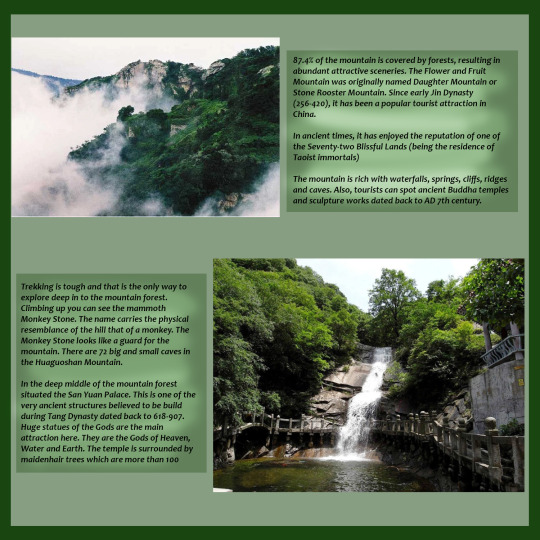
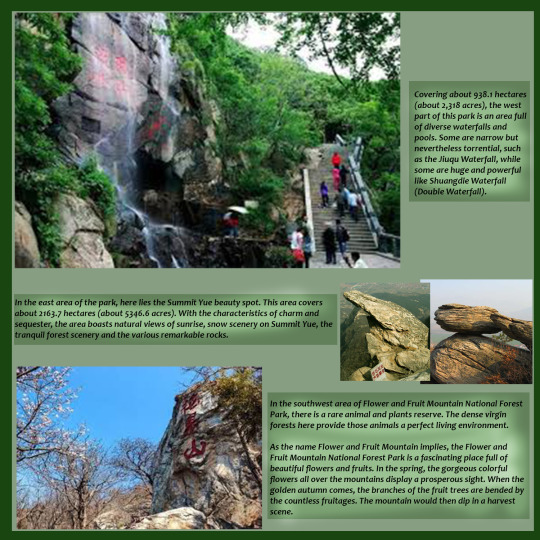
Now we can look into the show's version of the mountain. Lots of colors and amazing aerial shots.

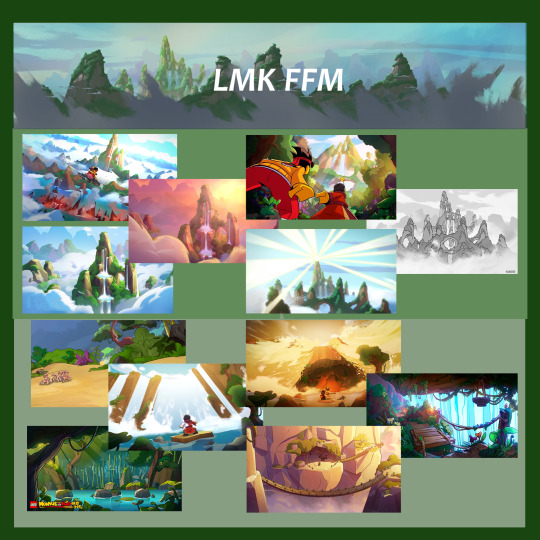
With Wukongs Hut home I had some thoughts and notices.
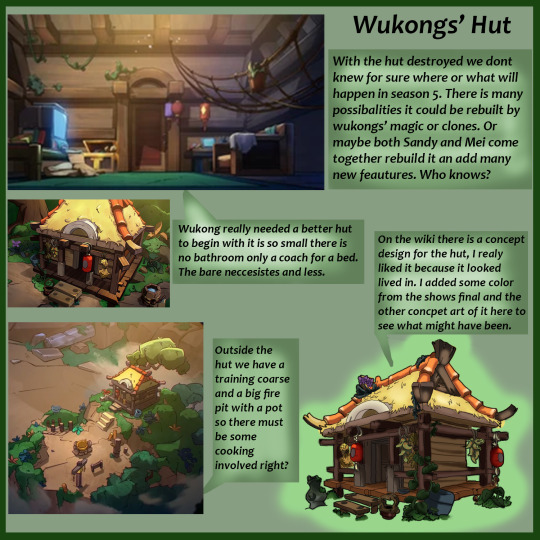
I also looked at the Brotherhood's Dinner scene and table.

See the separation of the flooring, the pillars have a specially shaped base and ornaments and decor in between each column.

Now for the Novel version.


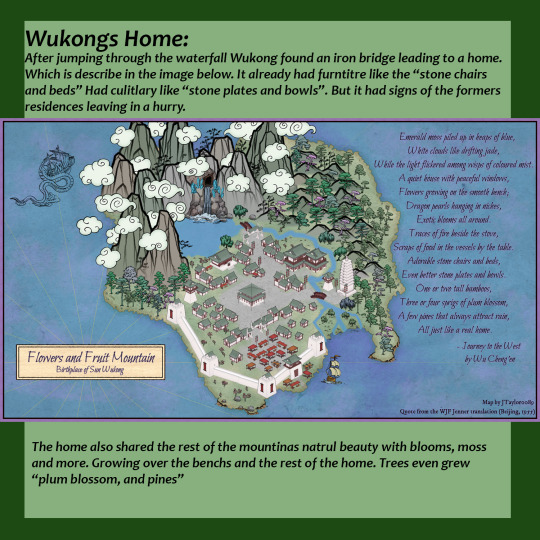
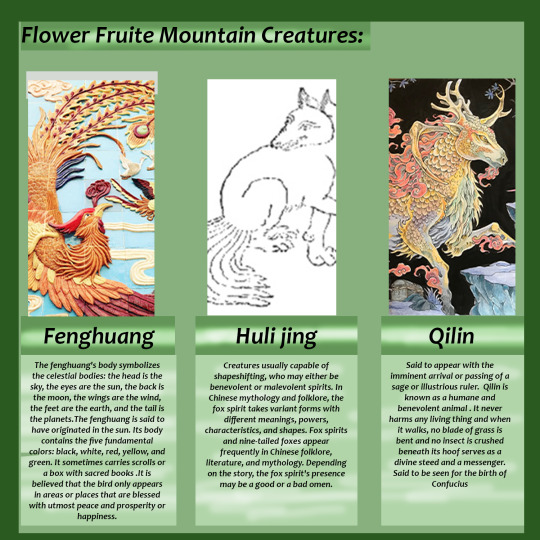
We can see a lot of difrences and similarities between all three of these mountains and homes. :)
#lego monkie kid#sun wukong#lmk#jttw#fan thoughts#journey to the west#flower and fruit mountain#chinese mythology#monkey king
55 notes
·
View notes
Text
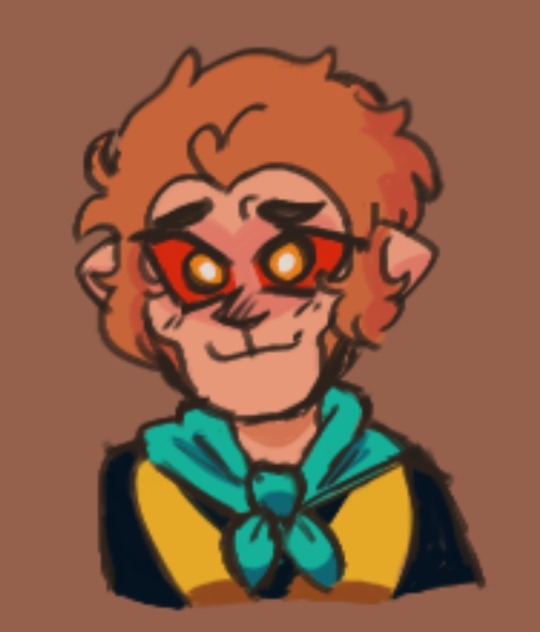
Another post <3
#lego monkie kid#lmk fanart#lego monkie king#digital aritst#lego monkey kid fanart#lmk art#lmk sun wukong#sun wukong#great sage equal to heaven#Simain#Sun#eclipse#journey to the west#Not really#Base in Chinese history#But shows the characters in the story#flower fruit mountain#Happy anniversary lmk s5
35 notes
·
View notes
Photo

“RESONANCE IN THE MOUNTAINS” 山水清音
ZHANG DAQIAN 張大千 // 1936
[hanging scroll: ink and colour on paper | 139.8 x 67.4 cm.]
#zhang daqian#chang dai-chien#expressionism#mountains#nature#guohua#ink and wash#painting#modern art#30s#chinese#art
175 notes
·
View notes
Text

China's most mysterious wildcat may not be its own species
New study downgrades status of the Chinese mountain cat, sparking concerns about its future
Deep in the alpine meadows of the Tibetan Plateau slinks one of the world's most mysterious felines. The Chinese mountain cat—with its sky-blue eyes, sandy coat, and unusual lack of markings—is so elusive that it wasn't photographed in the wild until 2007. For decades, many have considered the stocky-legged feline the only species of cat native to China. But that may be about to change.
A new genetic analysis of more than two dozen Chinese mountain cats concludes that the creature is not its own species, but rather a subspecies of feline that gave rise to several modern wildcats and the domestic cat. That demotion could hamper efforts to save the vulnerable animal, fears Jim Sanderson, a wildlife ecologist with the conservation group Re:wild who snapped that first photo. "The belief is that if it's not a species, nobody cares."
The new study began as an attempt to figure out whether China had independently domesticated the housecat. Most scholars believe domestic cats arose in the Middle East about 10,000 years ago. But there was evidence that other domestications could have occurred in Asia thousands of years later. Was the Chinese mountain cat involved?
Read more: https://www.science.org/content/article/china-s-most-mysterious-wildcat-may-not-be-its-own-species
134 notes
·
View notes
Text
And in my house what do I have?
Only a bed piled high with books.
-Han-shan (Cold Mountain), tr. Burton Watson
58 notes
·
View notes
Photo



A Big Round of Applause for the Chinese Giant Salamander
The Chinese giant salamander (Andrias davidianus) is one of the largest amphibians in the world, second only to the South China giant salamander (Andrias sligoi) which was only recently distinguished as a separate species. This species typically weights 25–30 kg (55–66 lb) and is 1.15 m (3.8 ft) in length, although It can reach up to 50 kg (110 lb) and 1.8 m (5.9 ft). Its anatomy is well-suited to its aquatic lifestyle; the broad, flat body allows it to creep along riverbeds, and its wide mouth allows it to gulp down any prey it might come accross. Their eyesight is very poor and as a result the eyes themselves are small. A. davidianus‘s skin is typically dark to blend in with its surrounding, and the excess wrinkles provide more surface area through which it can absorb oxygen from the water.
As their name suggests, the Chinese giant salamander is found only in China; specifically fragmented areas from Qinghai to Jiangsu and south to Sichuan, Guangxi and Guangdong. This species is entirely aquatic, and thus is most often found in the basins of the Yangtze, Yellow and Pearl Rivers. A. davidianus lives in caves or freshwater crevices, although they are also seen along lakes or open rocky riverbeds.
Part of the reason this species is so large is because they grow throughout their entire lives. Chinese giant salamanders start out as eggs, which are hatched in groups of 400-500 laid in slow-moving underwater cavities. The eggs are quite large, at a maximum size of 14–16 mm (0.55–0.62 in) after they’re laid and habe absorbed water. They take 50-60 days to hatch, and larvae emerge already resembling their parents, albeit with external gills, and are already 3 cm (1.2 in) long. The young are independent, although they typically stay in the stream they were hatched in until they’re fully grown. The gills are lost at 3 years old, although sexual maturity isn’t reached until 5 to 6 years and a length of 40–50 cm (16–20 in).
Mating occurs between mating occurs between July and September, when the water temperature reaches 20 °C (68 °F). During this time, males push sand and gravel out of their dens to clean them-- a process that can take up to a week-- and ‘shower’ regularly by moving under fast-moving currents. Females are attracted to clean dens, and once she chooses a mate the pair engage in a number of courtship behaviors including knocking bellies, leaning side-to-side, and cohabitating. After the female lays her eggs, she leaves and the male guards the eggs until they hatch. Individuals as old as 60 have been recorded in the wild, although few individuals survive past the larval stage.
Chinese giant salamanders have few predators as adults. The most common are otters, red foxes, weasels and hog badgers, although juveniles can also fall prey to large fish or even adult salamanders. To deter predators, A. davidianus secretes a white acidic, sticky substance from its skin. For the most part this species is the apex predator of its ecosystem, and feeds on insects, smaller amphibians, crustaceans, fish, and the Chinese water shrew (Chimarrogale styani). Individuals detect their prey by a combination of detecting chemicals in the water and a series of nodes along the sides of their bodies that sense vibration. When prey is located, the salamander creates a vaccum with their mouths, sucking in water and their meal.
Conservation status: The Chinese giant salamander is considered Critically Endangered by the IUCN. Primary threats include habitat loss, disease, and over-harvesting for meat. National and international conservation programs and zoos are working to raise awareness, conserve habitat, and raise captive-bred salamanders for re-release in the wild.
Extra fun picture for Chinese New Year:
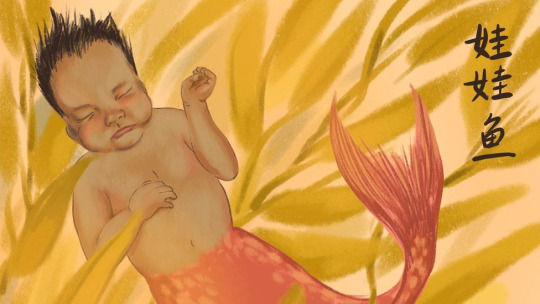
This picture is from a series of paintings by artist Frankie Huang, who depicts a number of Chinese words literally. In this piece, the Chinese giant salamander is shown as the literal translation of its name in China: Wawayu, or ‘Baby fish’. This name comes from the salamanders’ distinct vocalizations, which can often sound like crying babies.
Photos
Theodore Papenfuss
Egon Heiss
Ben Tapley
Frankie Huang (Instagram)
#chinese giant salamander#Urodela#Cryptobranchidae#giant salamanders#salamanders#amphibians#mountains#caves#rivers#freshwater fauna#subterranean fauna#asia#east asia#animal facts#biology#zoology#happy Chinese New Year!#(ik im two days late but i was moving out of my apartment)#(again)
207 notes
·
View notes
Text
Phylogenetic wild cat tournament
Domestic cat lineage
Genus: Felis
Depth: 10 (9 wins away from championship)
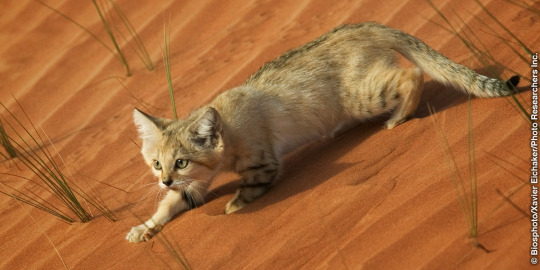
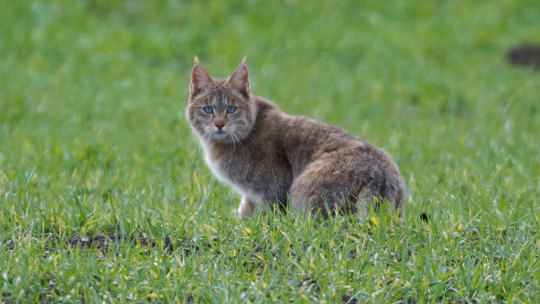
Two mysterious, rarely seen wild cats. The chinese mountain cat is just very rare: the first photographs were taken in 2007. Our new competitor, the sand cat however another case: it lives exclusively in desert which makes it unique among felines. Their thick, plushy fur is actually an adaptation to the heat of the day and the cold of the night: it reduces heat flow in both directions.
I brought on more fun fact about them from wikipedia: "The Toubou people have reported incidents of sand cats coming to their camps at night and drinking fresh camel milk."
Sand cat

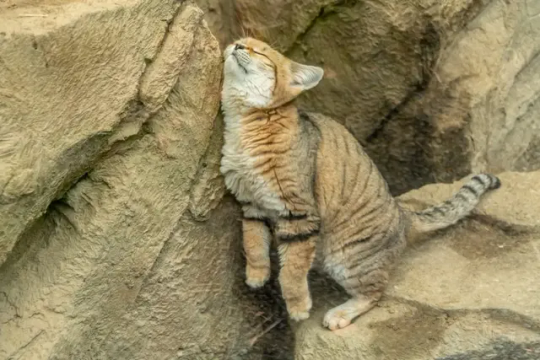
Chinese mountain cat


#polls#cats#tournament poll#phylogenetic wild cat tournament#domestic cat lineage#sand cat#chinese mountain cat
62 notes
·
View notes
Text


the dah hsian seetoo library at national chengchi university 📚🌅 政治大學達賢圖書館
#studyblr#langblr#chinese#中文#taiwan#taipei#台灣#台北#library#study#政治大學#政大#chengchi university#honestly ive barely captured how beautiful this library is#it has a LAKE#and study pillows facing the zhinan temple tucked in the mountains#and you can see the gondolas#mine
199 notes
·
View notes